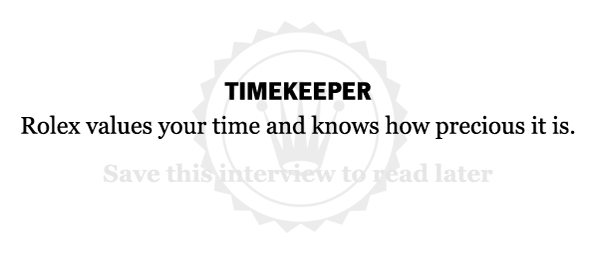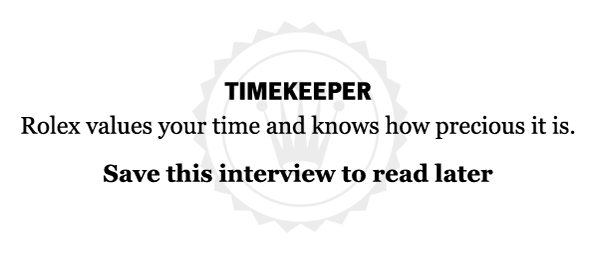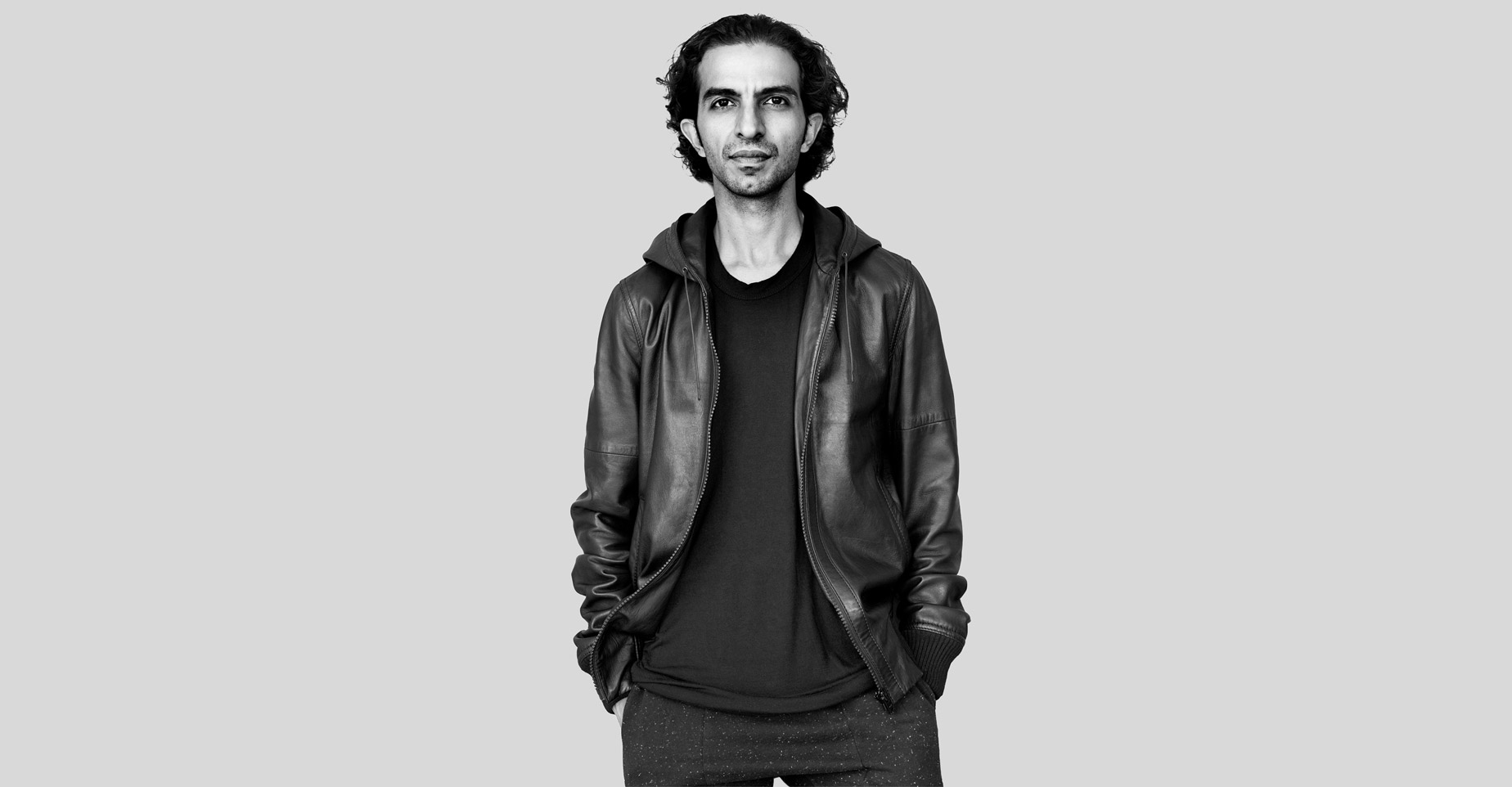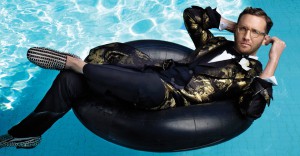Mr. Amed, has a fashion show ever made you cry?
About a week or so after Alexander McQueen committed suicide, I got an invite from the company’s CEO Jonathan Akeroyd. It was obviously a very, very difficult time for the team at McQueen and it wasn’t clear if the brand was going to continue to exist. In this moment they decided to present McQueen’s last collection in very, very small, intimate presentations of 15 or 20 people in an old hôtel particulier in Paris. McQueen was always known for these elaborate productions, but obviously none of that was present that day. It was just a simple show with models walking in a very beautiful but simple setting, without any bells and whistles. It was all about the clothes. I think the emotional charge of that moment and the gravity of the situation, but also the beauty of the clothes that he created… It was very, very emotional. It was very touching. I’ll never forget that moment.
McQueen was one of the true creative geniuses of fashion design in recent memory. As the founder of news portal Business of Fashion, do you think business or creativity drives the fashion industry today?
It is really about striking a balance. Fashion is not art. Fashion is a business that requires discipline and attention to detail and very organized systems of logistics and operations and processes. But even with the most smoothly oiled machine to manage the business, without creativity, fashion could not exist. If a machine is focused too much on efficiency and pumping out product and optimizing the machine, then what comes out the other end ends up being just a widget. Even if you have the greatest brand in the world, if you start putting up cookie-cutter products for a period of time, it’s going to damage your brand. The creativity is the oil that you put into that machine that makes it smooth and keeps it running. It’s the creativity that lubricates and fuels the industry. But it’s the business side that keeps it working. It keeps it chugging along.
Is homogenization a consequence of pursuing the business side of fashion?
There is a kind of homogenization. At times it can feel a bit depressing that whether you’re in Australia or Shanghai or Paris you see the same things everywhere. And it starts to feel like a bit of an identikit fashion industry. It’s the same stores selling the same big brands and the same big products, with the same campaigns and the same store formats. It takes a bit of the magic of fashion away. You might call it the McDonalds-ization of fashion. The fashion industry should be able to localize and tailor what it does in different markets.
You do see occasional signs of that happening.
That’s true, in some markets brands are starting to create stores that don’t look the same as a store on every other street in the world. That beautiful Hermès store on the Rive Gauche of Paris with a swimming pool is a perfect example of that. You can see signs of a local element or a local tailoring to the fashion industry, but for the most part we still have this kind of identikit fashion, which I find frankly a bit depressing. But I love that fashion is really emerging as a global industry and that creativity that I’m talking about is no longer the sole right of those of us who live in Europe or North America, the traditional centers of fashion. Everywhere I go there is interesting fashion to be had and exciting creativity to be discovered.
But have those emerging markets – like China or Nigeria – really had an effect on mainstream fashion yet?
The rise of the Chinese market has already showed its impact – we see quite a number of Asian models on the runways when you go to fashion shows. You have Burberry using Indian models in its catwalk shows and its campaigns. I think the biggest issue is still with the reflection of African faces in the fashion industry. And perhaps that will begin to change too as the markets in Africa become more and more important. Something like seven out of ten of the fastest growing economies are now in Africa. There’s over a billion consumers in the African continent and it’s the last continent that the industry really has left to explore and conquer as an industry.
Despite globalization and the revolution in digital publishing, traditional media outlets still have a lot of influence. Who really has the power in defining what makes the show a success?
I don’t think one can underestimate the ongoing and continued influence of traditional media. They continue to have the most powerful brand, the biggest reach, the authority, the access. All of that enables them to really have a huge influence on the market. But people are spending more and more time engaging with these new-media mavens on a variety of channels, whether it be blogs or social media. The audiences that follow them are extremely emotional and connected to those brands in a way that I don’t think they’re connected to traditional media. The one that is perhaps the least credited, but I think is really, really important now, is the brands themselves.
Has that changed so much recently?
Ten years ago brands had to rely on other forms of media to get themselves out, but brands have now become their own media company. They’ve got their own channels where they can engage with their consumers – and we’re talking huge numbers. American Vogue reaches maybe 10 million people a month. Burberry and Louis Vuitton have over 15 million people following them just on Facebook. If they build and create more real and authentic content, they’ll start to create the kinds of engagement with their brands that the bloggers and the new media have created with their followers. Emotions have become a core focus.
Rather than the façade of perfection that fashion brands used to project.
The idea of the perfect fashion image is now complemented by the real authentic images that you see coming through on Instagram or other platforms. There’s a new authenticity that the industry is starting to come to terms with and we’re all becoming much more accustomed to seeing the fashion industry not necessarily in these perfectly shot studio images that are created by scores and scores of people. Digital has really made the fashion industry a lot more transparent. So people can see and understand how the industry really works, and participate in an industry that was very inaccessible to people. The only thing that people used to see before was the end product. Anyone can participate in it now.
You’re living proof. You had a career in management consulting before starting Business of Fashion as a passion project.
When I started out I didn’t have the budget or resources available to create a print publication, but I just went out and tried to make it happen. I could have probably built a great career in management consulting, but one of the insights that I had early on is that just because you’re good at something doesn’t mean that you should continue to do it. Somewhere in my heart of hearts I knew it wasn’t what I wanted to do.
Why?
I wanted to work in an industry that was an important global business, but where one of the driving forces was creativity. And I figured out how I could intersect my creative interest with the business and analytical skills that I had. As I began to take risks, leaving my very comfortable and secure job and taking this first leap into fashion, every subsequent risk became easier to take because I began to see the kind of opportunity and excitement that risk-taking offered.
Return to Top

Short Profile
Name: Imran Amed
DOB: 20 April 1975
Place of birth: Calgary, Alberta, Canada
Occupation: Entrepreneur





















Comments
write a comment, read comments